Похожие презентации:
Teamwork. Foundations of Business. Economics and Business
1.
Review Slides 1005 - Test 1• Chapter 1 – Teamwork
• Chapter 2 - Foundations of Business
• Chapter 3 – Economics and Business
• Chapter 4 - Ethics and Social Responsibility
• Chapter 5 – Business in a Global Environment
2. CHAPTER 1 - TEAMWORK
Teams, Teamwork, Groups• A team is defined as a group of people with complementary skills
who work together to achieve a specific goal.
• Teamwork: "The ability to work together towards a common vision.
The ability to direct individual accomplishments toward organizational
objectives. It is the fuel that allows common people to attain
uncommon results." Andrew Carnegie
• A group might be together or have meetings, but they don’t have to
work together to achieve goals.
3. WHY are teams important in business? Teams should improve workplace performance in following areas:
• Productivity• Positive culture
• Improvement in customer service
• Competitiveness
• Profitability
• Lower absenteeism
• Worker satisfaction
• Quality of life
5 Characteristics
of a Team
1. Shared accountability for achieving
specific goals
2. Function interdependently
3. Require stability
4. Hold authority and decisionmaking power
5. Operate in a social context.
4.
Types of Teams• Manager-Led Teams. - A manager or supervisor in charge of setting team
goals, assigning tasks, and monitoring the team’s performance. Individual
team members - little autonomy.
• Self- Managing teams – role of team supervisor eliminated.
• Cross-Functional Teams - designed to take advantage of the special expertise
of members drawn from different functional areas of the company.
• Virtual Teams – teams with members in any location or time zone
5. 7 Factors of Effective Teamwork
Dependanton each
other
Communication
Boosters encourage
each
other
Trust
Enjoyment
Rotate
leadership
Better
together
than single
• Strong balance on a team is imperative for success.
6. What skills does a team need? What makes a team cohesive?
Interpersonal Skills
Communication Skills
Technical Skills – how to do the actual work
Problem Solving
Decision-making norms and skills
Smaller size.
Similarity of members.
Achieving success.
Exclusiveness.
Competition against other teams.
A team can be TOO cohesive: They get along
well, but diverse teams can achieve stronger
solutions due to power of different points of
view.
Groupthink can be a problem —the
tendency to conform to group pressure in
making decisions, while failing to think
critically or to consider outside influences.
7. Teamwork Roles
Task-Facilitating RolesRelationship-Building Roles
Information Seeking
Elaborating
Urging
Monitoring
Reality Testing
Direction Giving
Information Giving
Process Analyzing
Enforcing
• Supporting
• Tension Relieving
• Consensus Building
• Summarizing
• Harmonizing
• Confronting
• Energizing
• Developing
• Empathizing
8. How to Erode Team Performance?
• low cooperation (blocking)• poor management support
• failure to delegate
• competing priorities
Blocking Behaviours
Actions that limit team’s overall
performance or hamper individuals
on a team:
9. Chapter 2 – Foundations of Business Concept of Business and Profit
• Businesses produce or sell products or services in order tomake a profit
• Profit
• the money left over from revenues after a firm pays its
expenses
• Profit motivates individuals to engage in business
activities
10. Stakeholders: Any person or group with an interest in the success or failure of the company
• Stakeholders involved inBusiness: customers,
vendors, employees,
landlords, bankers
• Stakeholders Outside:
general public, the
environment and various
government
departments
11.
Functional Areas of Business1.
2.
3.
4.
5.
6.
Human Resources
Operations
Marketing
Accounting
Finance
Information Technology
12. Functional Areas of Business- Human Resources
Functional Areas of BusinessHuman ResourcesHR Manager Responsibilities
• Skills and capabilities needed in
employees
• Staffing plans
• Recruitment
• Performance management
• Employee treatment and laws
• Succession plans
• Compensation and benefits
13. Functional Areas of Business Operations
Operations managers turnresources into goods or
services:
• Tangible Products (ex. Apple)
• Intangible Products (hospitals
and healthcare)
• Quality Maintenance
• Productivity & efficiency
• Scheduling
• Supply chain management
14. Functional Areas of Business- Marketing
Functional Areas of BusinessMarketing• Identify customer needs (market research)
• Develop products to meet the needs
• Create customer awareness and desire for products
Marketers develop the benefits and features customers want, including:
• Price
• Product
• Place
• Promotion
15. Functional Areas of Business- Accounting
Functional Areas of BusinessAccountingWhat Accountants Do?
• Measure, Summarize, and Communicate
Financial & Managerial Info
• Advise on Financial Matters
Two Fields of Accounting:
• Financial: reporting results
• Managerial: projections and plans
16. Functional Areas of Business- Finance
Functional Areas of BusinessFinance• Plan, obtain, and manage company funds
• Assess company fund needs
• Track fund receipt times
• Plan investments in a plant and its equipment
17. Functional Areas of Business- Information Technology
Functional Areas of BusinessInformation TechnologyInformation technology
(IT) managers:
• Build computer and network
infrastructure
• Implement security protocols
• Develop user interfaces and apps
for customers
18. External Forces in Businesses: The Macro-Environment
The EconomyPublic Pressure
Environment
Political
& Government
Macro- Environmental forces
(shown in diagram) are
external to business and out
of business’ control, but can
have big influence in the
success or failure of a
business.
Demographics
& Culture
Technology Changes
The Business Itself
19. Chapter 3 - Economics
Chapter 3 Economics• Economics: The study of allocation of limited resources to satisfy
unlimited wants and needs of:
• Individuals
• Businesses
• Governments
• Nations
20. Factors of Production and Resources
Resources:Resources are the inputs used to produce outputs, such as:
1. Land
2. Natural resources
3. Labour
4. Capital
5. Entrepreneurship
6. Information (Knowledge & Data)
Resources are combined to produce goods and services. The
specific resources used by each business to produce are called their
Factors of Production.
21. Input and Output Markets
Economics is the study of:• Interactions between households and businesses.
• How factors of production are combined to produce goods and services.
Input and Output Markets
22. 2 Types of National Economies: Planned System
• Government exerts control overthe allocation of all or some
goods and services / resources.
• Communism: All allocation of
resources. Government owns
many of the resources.
• Socialism: Some allocation of
resources.
Free-Market System
• Limited government
involvement in how business
runs.
• System which most businesses
are privately owned.
• Competition dictates allocation of
goods and services.
• Profit incentive is the key driver.
• “What’s good for business is good
for all people”
• Ultimate democracy?
23. Most Countries are some form of “Mixed Market” Economy Today
CanadaDefinition Mixed Market Economy : Reliance on both markets and government
to allocate resources.
Rarely are they pure capitalist or communist. Governments having leaning
towards free market or socialist (government led) principles.
24. The Canadian Economic System
Is a mixed market systemPrimarily free market
Some socialist principles
Government controls
Through providing:
basic services:
• Social security, retirement
• Postal services and air
and free health care.
traffic control.
25. Degrees of Competition:
Competition = when businesses vie for the same customers or resourcesin a particular market or industry.
• Competition motivates business to operate efficiently
• Forces a business to make products better or cheaper
Degrees of Competition:
• Perfect Competition
Increasing
Competition
• Monopolistic Competition
• Oligopoly
• Monopoly
Decreasing
Competition
26.
Degrees of CompetitionPerfect Competition
Monopolistic Competition
• Many sellers
• Product basically identical, standardized
• Individual firms have no control over
price
• Buyer will purchase from the lowest
price source
• Can have few or many sellers
Oligopoly
Monopoly
• A few suppliers dominate sale of a
product or service
• Each supplier knows what the others
are charging
• Prices gravitate towards a common
“market price”
• Product is seen as “unique” for some
consumers.
• A differentiated brand provides the firm with
some control over pricing vs competition
One producer and one source of supply
Unique product
Complete control over price
No competitors
Often government regulates only 1
competitor
27. Comparing 4 Types of Competition
Four Major Market StructuresCharacteristic
Perfect Competition
Monopolistic
Competition
Oligopoly
Pure Monopoly
Number of firms
Very many
Many
A few
One
Types of product
Homogeneous
Differentiated
Homogeneous or
differentiated
Homogeneous
Barriers to entry or
exit from industry
No substantial
barriers
Minor barriers
Considerable
barriers & cost
Extremely great
barriers
Examples
Agriculture
Specialized
Retail
Banking
Public utilities
28. The Basics of Supply and Demand
• In perfect competition, price isdetermined through
supply and demand.
• The supply of products
from sellers.
• The demand for products
by buyers.
29.
Demand/Supply/PriceRelationships
1. What
happens
to old iPhone sales when
next gen iPhones
are released?
Demand
Supply
2. What happens
when a
big event
sells out?
3. What happens when
one gas station on a
corner drops their
price?
Price
30. Demand Curve Supply Curve
Demand CurveDemand is the quantity of a product that buyers are
willing to purchase at various prices.
Supply Curve
Supply is the quantity of a product that sellers are
willing to sell at various prices.
31. Equilibrium Price
• The Equilibrium Price is thepoint at which both the
supply and demand curves
intersect.
• Perfect competition markets
will arrive at an equilibrium
point at which both buyers
and sellers are satisfied.
32. Impact of Supply or Demand on Price
Excess supplyor weak demand
drives
prices
Down
Excess demand
or short supply
drives
prices
Up
(Think Raptors NBA
playoff tickets)
33. Economic Goals
• The world’s economiesshare three main goals:
• Growth
• High employment
• Price stability
34. Ways Countries Measure Economic Growth
• Economic performance measured by total output.• Gross domestic product (GDP) is the market value of all goods and
services produced domestically in a given year.
• Increasing GDP = Growth of economy
• Decreasing GDP = Contraction of economy
• GDP per capita is the measure of total production of goods and
services divided by the number of households.
• Unemployment rate, Inflation rate, Interest rate, CPI, value of
currency (foreign exchange rate), real GDP .
35. The Unemployment Rate
• Percentage of labour force that isunemployed and actively seeking
work.
• Important measure of economic
health.
• In Canada a 5-6% unemployment
rate would be a reasonable
number. 8% would be a more
problematic number.
36. Price Stability & Inflation Rate
Price Stability & Inflation RateStability – when prices don’t change or rise just a
little. Rapidly rising prices cause economic
difficulty for nations, businesses, individuals.
Graph: Canada’s Inflation Rate 1920-2019
• Inflation: When prices rise.
• Deflation: When prices decrease.
37. The Consumer Price Index
• CPI measures the rate of inflation bydetermining price changes of a hypothetical
basket of goods, such as:
• Food
• Housing
• Clothing
• Medical care
• Appliances
• Automobiles
A lot of raises based on CPI.
38. Economic Forecasting
• Future economic trends can beforecasted by analyzing the
following:
• Economic indicators
• Lagging indicators
• Leading indicators
Government’s Role in
Managing the Economy
• Monetary policy involves managing
the money supply by the Bank of
Canada. (Canada’s central bank –
government)
• Usually monetary policy involves
raising /lowering interest rates for a
country.
• Fiscal policy relies on the
government’s powers of spending
and taxation.
39. Government Deficits and The National Debt
Government takes in moneyannually through taxes & fees.
Government spends on
essential services and other
policies and priorities.
If government spends more in
a year than it takes in
revenue, it has a DEFICIT that
year. All the years of deficits
add up to the National Debt.
40.
41. What is Ethics?
• Knowing what is a right or a wrong.• Being aware when you are practicing one over the other.
• Culturally based; a community often has standards or
moral values for what is right or wrong
Everyone develops their own
“code of ethics”
from young age
Experiences
Family
Personal Code of
Ethics
Peer Group
3-41
42. Business Ethics
• Business Ethics requires:• being honest
• doing no harm to others
• competing fairly
• Not putting own interests above
those of the, and its workers.
• Need a strong sense of what’s
right and wrong.
• Need personal conviction to do
what’s right, even if it means
doing something that’s difficult
or personally disadvantageous.
“Newspaper Test”
If the media or internet published what
happened, would it stand up
to public scrutiny?
3-42
43. Written “Codes of Conduct”
Demonstrates importance of ethics to a business or corporation. A commitmentto ethical behavior.
• Increase public confidence in a firm or industry
• Help reduce need for government regulation
• Improve internal operations by providing consistent standards of both ethical and legal
conduct.
• Clarifies employee expectations up front! What to do in a small or large ethical
dilemma.
• Help managers respond to problems that arise due to unethical or illegal behaviour
3-43
44.
Who are the “stakeholders” for businessCorporate Social Responsibility?
To
Investors
To
Customers
Also: Towards
Suppliers &
Towards
Community
Social
Responsibility
To
Employees
To
Environment
3-44
45. Carroll’s Pyramid of Corporate Social Responsibility
• 4 items published1979.
• In 1991, Carroll
recast as pyramid.
• infrastructure of CSR
- built on an
economically sound
and sustainable
business.
46. At the top of pyramid – Businesses prioritize Social Responsibility & Philanthropy
At the top of pyramid –Businesses prioritize
Social Responsibility & Philanthropy
What this looks like?
• Employees and owners follow highest ethical standards
• Employees fairly treated
• Support for diversity
• Take lead in donating, sponsoring a cause (eg CIBC Run for
the Cure)
• Allocate employee time, company funds & resources to
philanthropy
• Care about customers, suppliers, environment.
• Being socially responsible because you believe in it
• Good for company image & attractive to customers
• Willing to do much more than law requires
3-46
47. .
You Can Be Ethical at Work.
• Set high personal standards for yourself.
• Follow your employer’s code of personal
conduct
• While at work, focus on your job. (Don’t
steal time.)
• Don’t appropriate office supplies or
products or other company resources for your
own use.
• Be honest
48. Avoid Conflicts!
• Conflicts of Interest – choice between personalinterest ($$) vs interest of others (usually your
company)
• Conflicts of Loyalty – no $$ interest but conflicting
loyalties between employer vs friend or family
• Taking Bribes vs Small Gifts –Bribery illegal in Canada
49. Corporate Social Responsibility to Stakeholders
For EmployeeProtect:
• Equal opportunity & no
discrimination, harassment
• Health and Safety
• Fair Wages
• Whistle-blowers are protected
To Customers
Protect:
• Rights of Consumers
• Price-fixing
• Misleading advertising
• Food safety
• Labelling
• Privacy
• Contracts
To Investors/Owners
Avoid:
• Misrepresentation of Finances
• Using Company $ for Personal Gain
• Insider Trading
To Environment
No to:
• Pollution
• Habitat destruction &
global warming
3-49
50. Employer Responsible to ensure:
• Equal opportunity & workplace free of discrimination• Policies against discrimination. Human rights code.
• Informal behaviour of managers and employees can be a factor.
• Fairn, open process for promotions, raises.
• Health and Safety
• Safe workplace
• Employee Privacy - when and when not?
• Drug testing
• computer / email monitoring
• Employee Whistleblowers
• Employees who call attention to unethical behaviour of their executives,
managers or peers.
• High risk to blow the whistle – could get fired or demoted.
• Now there is whistle blower legislation
3-50
51. Misrepresenting Company’s Financial Information
• Companies must conform to Accounting guidelines called “Generally AcceptedAccounting Principles” (GAAP)
• Use “creative accounting” to inflate expected profit figures. Misleads investors.
Business leaders, their financial officers and their external accountants can all be
liable.
• Examples: Enron. Garth Drabinsky at Livent.
3-51
52. Insider Trading
• Using confidential (non-public) information to gain fromthe trading in stock
• E.g. if you know there is going to be bad news, you sell
stock before news is public.
• E.g. if there is good news coming, you buy stock at
today’s lower price.
• E.g. Martha Stewart (ImClone shares)
• Some companies establish stock trading cutoff date for
executives before public announcement dates.
• Can involve the collusion of investors sharing info and
buying and selling stock at the appropriate time to make
huge profits
3-52
53. Consumer Rights Issues
Consumerism• social movement that
seeks to protect and
expand the rights of
consumers in their
dealings with
businesses
Consumers rights are protected
in law.
• right to safe products
• right to be informed
• right to choose what they buy
• right to be heard
3-53
54.
Price Fixing :Illegal pricing practices may occur
due to the intentional (illegal)
limiting of competition
• Collusion - illegal
• a group of companies conspiring to
fix prices
• results in inflated prices and a lack
of competition
• Price gouging during shortages –
unethical? (eg stocking up in a
hurricane!)
3-54
Product labelling, food safety
Ability to cancel contracts
(especially on phone, door-todoor)
Privacy of customers’ info
Ethics & Truth in Advertising
55. Social Responsibility to Environment
• Land Pollution• Waste Disposal
• Recycling Costs
• Reduce packaging at source
• Air Pollution
• Water Pollution
• Habitat preservation
• Global warming
3-55
56. Chapter 5 – Business in Global Environment Contemporary Global Economy
• Total volume of world trade $20.2 trillion /yr• Globalization = the integration of markets globally
• The world is becoming a single interdependent system
• benefits to countries and investors
• technology makes it easy – world is becoming more of single
market network.
• globalization criticized for exploiting less developed countries
• For Canadian business
• Canada is a small, limiting market
• Substantial rewards for Canadian business beyond our border –
but complexity and risk!
5-56
57. Imports and Exports
• Imports• Products & services made or grown abroad, but sold domestically. (i.e. sold in
Canada).
• Exports
• Products & services made or grown domestically (in our own country) but
shipped and sold abroad.
5-57
58. Types of Competitive Advantage between nations
Absolute advantage• a country is the only source of a particular product OR country can make more product
using fewer resources than any other country.
• Examples: Brazil-coffee, Canada-lumber, Saudi Arabia-oil, France - wine
• Often resource based – hard for other countries to match. But may end when resource runs
out. (eg France no longer is only country able to produce a great grape)
Comparative advantage
• a country can produce a product more cheaply (or lower “opportunity cost” compared to
another nation.
• Examples: Canada has comparative advantage vs S. Korea in farming, S. Korea has
comparative advantage in electronics production.
5-58
59. Opportunity Cost
Opportunity Cost: The cost of obtainingone item is the lost opportunity to do or
consume something else. Value of the next
best alternative.
Opportunity
Cost
Opportunity can be Time: Sleeping
through class and missing the lecture.
Opportunity can be in Money: Spending
on video games and not affording text
books.
60. Measuring Trade between Nations: Balance of Trade
Imports < Exports= Trade Surplus
(Favourable)
Imports > Exports
= Trade Deficit
(Unfavourable)
Source: Ebert, R.J., Griffin, R.W. et al. Business Essentials,
4th Custom Edition for Fanshawe College. 2016. Toronto, On. Pearson.
5-60
61. Balance of Payments
• The difference between thetotal flow of money coming
into a country and the total
flow of money going out
over a period of time.
• Imports and exports is a big
factor.
• Also includes; tourism,
foreign investments and
foreign aid.
• Directly relates to national
currency value.
Source: e.Campus Ontario Foundations of Business, 2019..
62. Canadian Imports to and Exports from Selected Countries, 2014
CountryExports to this county
($ billions )
Imports from this country
to Canada
($ billions)
United States
(Surplus for us)
$400 B
$350.7
European Union
40.5
49.3
Mexico
6.8
17.2
China
20.6
35.6
Japan
11.1
9.2
All Others
49.8
62.2
Total – Trade Surplus
528.8
524.4
5 years ago US totals were exports $271, imports $236.
Source: Ebert, R.J., Griffin, R.W. et al. Business Essentials,
4th Custom Edition for Fanshawe College. 2016. Toronto, On. Pearson.
5-62
63. 5 Methods for International Expansion
Exporting via IndependentAgent
• Hire Agent in other country to handle shipping,
customs, etc so customers there can deal
“domestically”
Licensing or Franchising
Arrangement
• Local company pays royalties or franchise fees for
right to produce/market your product in their
country.
Contract Manufacturing
and Outsourcing
• Have another company complete components of
your production or administration.
Strategic Alliance or Joint
Venture
Establish Foreign Direct
Investment /Open Local
Subsidiary
• Partner with company from other country. A contract
covers how expenses, work, profits will be shared.
Usually for specific project.
• Invest locally in facilities or employment. Often
demanded by a government to get permission to
sell in that market.
5-63
64. Amount of Foreign Direct Investment
Source: e.Campus Ontario Foundations of Business, 2019..65. Multinational Firms – truly Global operations
• Assets, factories, mines, sales offices, and affiliates in two or more foreign countries• Worldwide mindset – don’t really think themselves as having “domestic” and “International”
divisions.
• Planning & Decision-making geared to global markets.
• Worldwide locations.
• Location of head office is almost irrelevant
• Go where there are favourable exchange rates, technology and expertise
• Provide needed jobs, prosperity, technology, and growth to developing nations
• Often criticized for taking resources out of the country, and not doing enough to develop
local labour markets
• e.g. Nestle, IBM
5-65
66. Multinational Corporations (MNC)
• Company operating inmany countries.
• Often adjust globally
their:
• Operations
• Products
• Marketing
Criticism of MNCs
• Relocating jobs
• Harming
environments
• Working conditions
Defence of MNCs
• Cheaper products
• Economic
development
• Increases crosscultural
understanding
67. Environment for Global Business
• International business requires anunderstanding of global situation:
Economics
Laws
Politics
Currencies
• Languages
• Culture of customers
• Culture of business
68. Economic Global Environment in Countries varies widely
EconomicDevelopment:
• GDP, average income, education level
or banking system.
Currency
Valuations and
Exchange Rates:
• Variation in national currencies causes
volatility in exchange prices
Legal and
Regulatory
Environment:
• Legal system, government regulations,
taxes or duties.
Foreign Corrupt
Practices Act:
• Corruption of Foreign Public Officials
Act (CFPOA) – illegal for Canadian
companies to offer bribes anywhere
69. Economic Development: Wealth of Countries Drives Business Impacts
• Countries can be categorized using gross national per-capita income• High-income Countries (per capita income per year > $12,746)
• Canada, US, most Europe, Japan, Kuwait, South Korea, Israel, etc.
• Upper middle-income ($4126 to 12,735)
• China, Columbia, Argentina, Turkey, South Africa, Mexico, etc.
• Low middle-income ($1046 to 4125)
• Ukraine, Philippines, Kenya, India, etc.
• Low-income or Developing Countries (income per year < $1,045!)
• South Sudan, Haiti, Afghanistan, etc.
• Higher income means these countries have more consumer demand, but labour is expensive.
• Lower income means these countries offer cheaper labour to make goods, but have less
ability to buy goods from others.
• Developing countries may be risky for business. Weak or unstable governments, poverty,
hunger, low literacy, civil unrest etc.)
Source: World Bank Country and Lending Groups by Gross National Income per Capita 2015,
excerpted from e.campus Ontario, Foundations of Business.
5-69
70. Legal and Regulatory Environments May Vary
• Planned economies vs . Market economies – can you buy land? Getpermission to operate?
Typical practices of governments use to control foreign business:
• heavy subsidization of locally-based firms
• local content laws favouring local businesses over foreign subsidiaries
• Complex permits or licenses for foreign firms to conduct business
• Banned activities - eg UFC fights were illegal in Ontario
• No dumping regulations
5-70
71. Social & Cultural Differences of Consumers
Social & Cultural Differences of ConsumersDetermines how and what local consumers buy:
• Population demographics
• Shopping habits
• Religious differences
• Social beliefs
• Food and entertainment preferences
5-71
72. The Cultural Environment makes a difference in how business is conducted locally.
Language• Various languages
• Dialects
• Lost in translation
High and LowContext
Cultures
• Get down to
business vs.
chitchat
Time and
Sociability
• Punctuality vs.
casual lateness
Intercultural
Communication
• Reserved vs.
animated
73. Transparency International: Corruption Perceptions Index (CPI)
TransparencyInternational:
Corruption
Perceptions
Index (CPI)
Rank
Country
CPI Score
1
New Zealand
89
2
Denmark
88
3
Finland
85
3
Norway
85
3
Switzerland
85
4
Singapore
84
4
Sweden
84
5
Canada
82
176
Yemen
16
176
Sudan
16
177
Afghanistan
15
178
Syria
14
179
South Sudan
12
180
Somalia
9
74. Trade Controls by Governments
Protectionism: Government protects its domestic businessat expense of free global markets.
Methods for Governments to Protect Domestic Business:
• Quota
• limitations on importation of a product class
• Embargo
• forbidding export/import from a nation (US vs. Cuba)
• Tariff:
• Putting a tax of foreign goods when they are imported into country
• Raises government revenues as well
• Subsidy
• government financial assistance for domestic firms
• ‘Local Content’ Laws
• Requires that at least part of the product be made in the country that is importing. (eg
Japanese car makers had to build assembly plants in Canada)
5-74
75. Reducing International Trade Barriers
Trade Agreements between nations
General Agreement on Tariffs and Trade (GATT)
World Trade Organization (WTO)
The International Monetary Fund (IMF)
The World Bank
76. World Trade Organization (WTO)
• Member nations negotiate trade agreements and resolve tradedisputes
• successor of GATT, but more power
• 149 countries, plus
• Agricultural subsidies controversial
• Some protest against trade liberalization
5-76
77. Trade Agreements to Overcome Barriers to Trade
Treaties and Agreements between countries can prevent individual countriessetting up barriers.
Major Agreements between Countries:
• European Union (EU)
• The North American Free Trade Agreement (NAFTA) since 1990’s . Canada ,
Mexico, U.S.
• US president campaigned in 2016 on tearing up NAFTA.
• NOW A NEW USMCA signed in 2018. Key to Canadian economy.
5-77
78. An example: The European Union
Trade agreement in 1990s
27 countries
One currency – Euro
No tariffs inside, common tariffs
outside
• Individual countries’ economies
now tied to one another
• Brexit?? UK leaving






















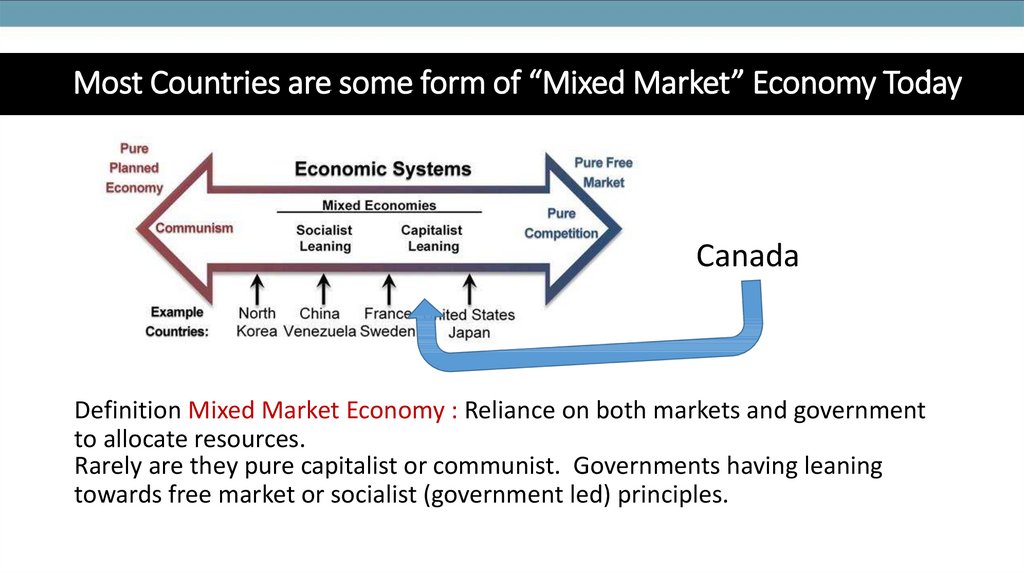











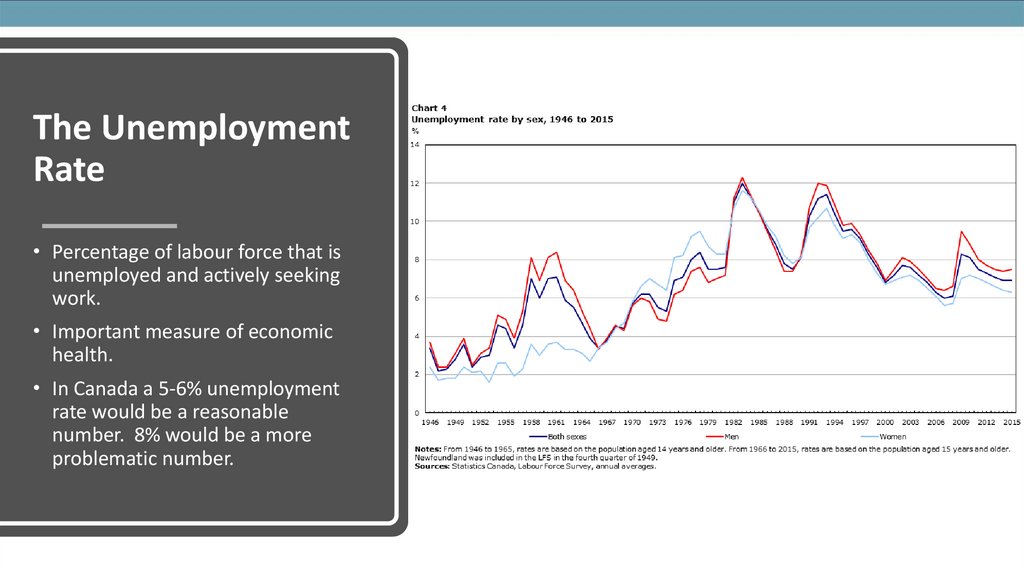






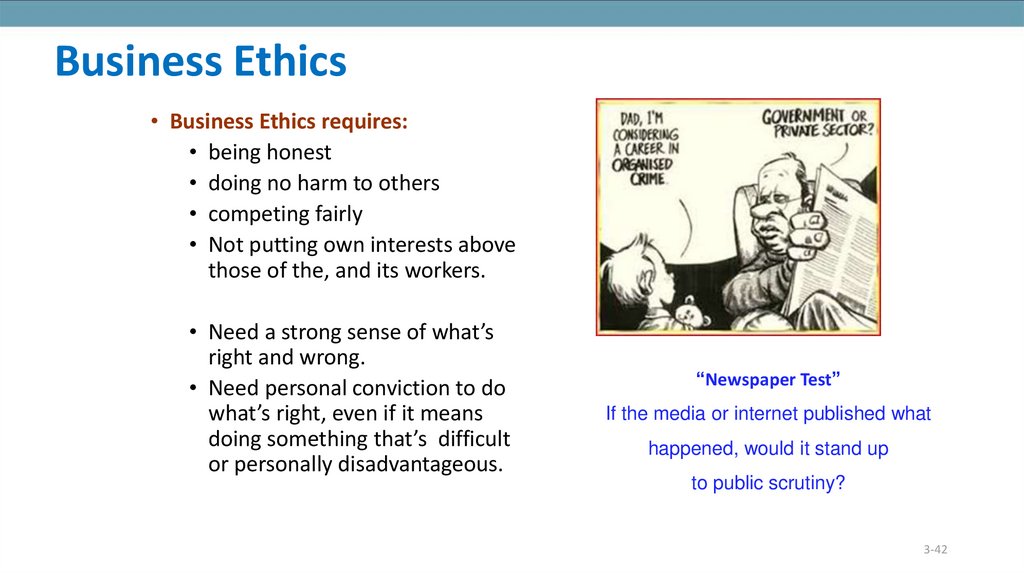
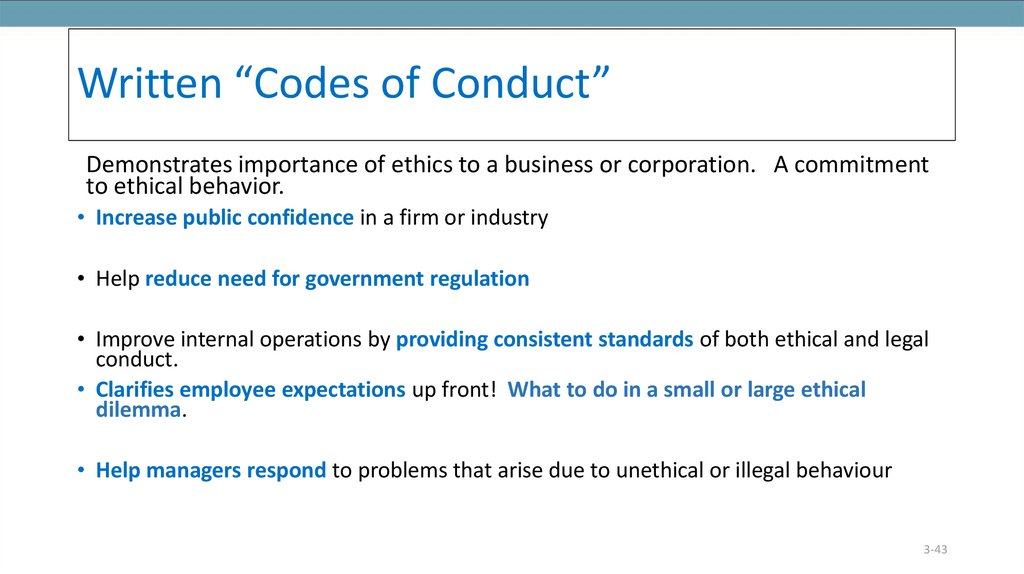













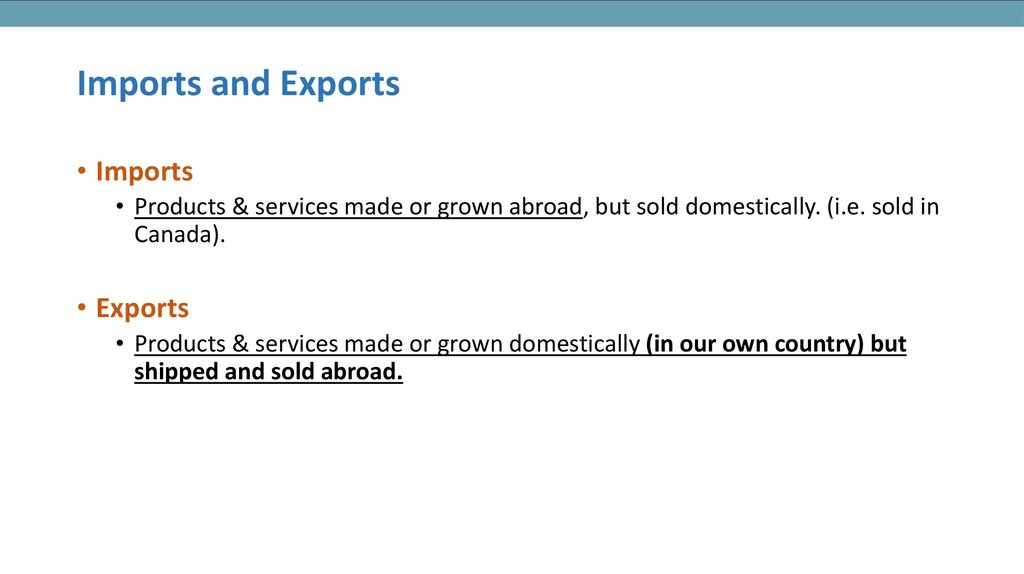






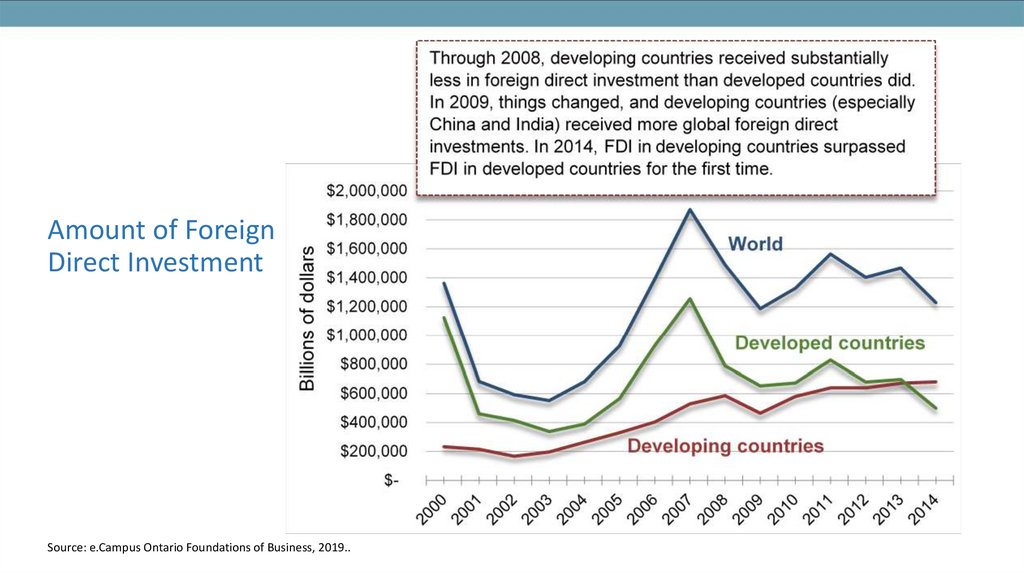
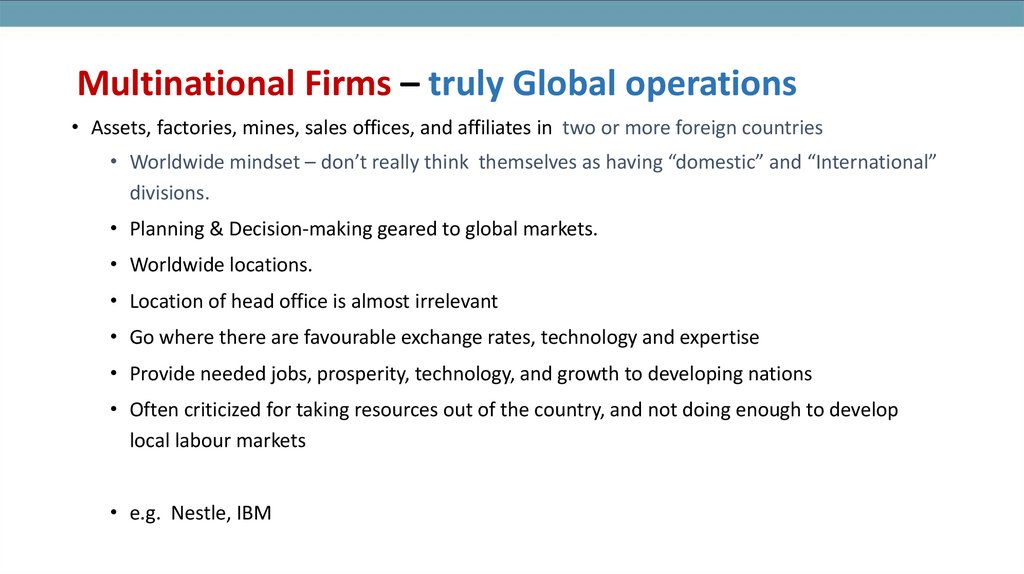













 Бизнес
Бизнес








